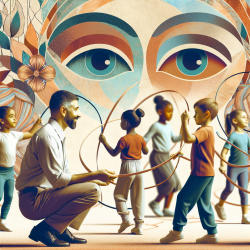As a speech-language pathologist committed to data-driven decision-making, it's crucial to continuously seek innovative methods that enhance the therapeutic experience for children. One such method, highlighted in the research paper titled A Norm-Creative Method for Co-constructing Personas With Children With Disabilities: Multiphase Design Study, offers valuable insights into creating more inclusive and effective therapy programs.
Understanding the Norm-Creative Method
The study introduces a norm-creative and participatory approach to generating personas, specifically tailored for children with disabilities. This method emphasizes the importance of involving children in the design process, ensuring their perspectives and needs are accurately represented.
Key Findings
- Inclusive Participation: The study involved 16 children with various disabilities in persona generation through image-based workshops, allowing them to co-create characters and scenarios.
- Effective Communication: The image-based and iterative co-construction method proved effective in enabling flexible communication and participation.
- Validated Results: The personas were validated with additional children, a young adult with a disability, and a rehabilitation professional, ensuring their credibility and usability.
Practical Applications for Speech-Language Pathologists
Implementing the norm-creative persona method can significantly enhance therapy outcomes for children with disabilities. Here’s how you can incorporate these findings into your practice:
1. Embrace Participatory Design
Involve children in the therapy planning process. Use image-based tools and workshops to gather their input and co-create therapy goals and activities. This not only empowers the children but also ensures the therapy is tailored to their unique needs and preferences.
2. Use Data-Driven Personas
Create detailed personas based on qualitative data from your clients. These personas should reflect the children’s goals, preferences, and challenges. Use these personas to guide your therapy planning and decision-making processes, ensuring that the therapy is client-centered and effective.
3. Foster Norm-Critical Awareness
Adopt a norm-critical approach in your practice. Challenge existing norms and assumptions about disabilities and focus on creating a resource-oriented, empowering therapy environment. This mindset shift can lead to more innovative and inclusive therapy solutions.
Encouraging Further Research
The study also highlights the need for further research in applying the norm-creative method to different contexts and user groups. As practitioners, we should actively participate in and support research efforts to continually improve our methods and outcomes.
To read the original research paper, please follow this link: A Norm-Creative Method for Co-constructing Personas With Children With Disabilities: Multiphase Design Study.










